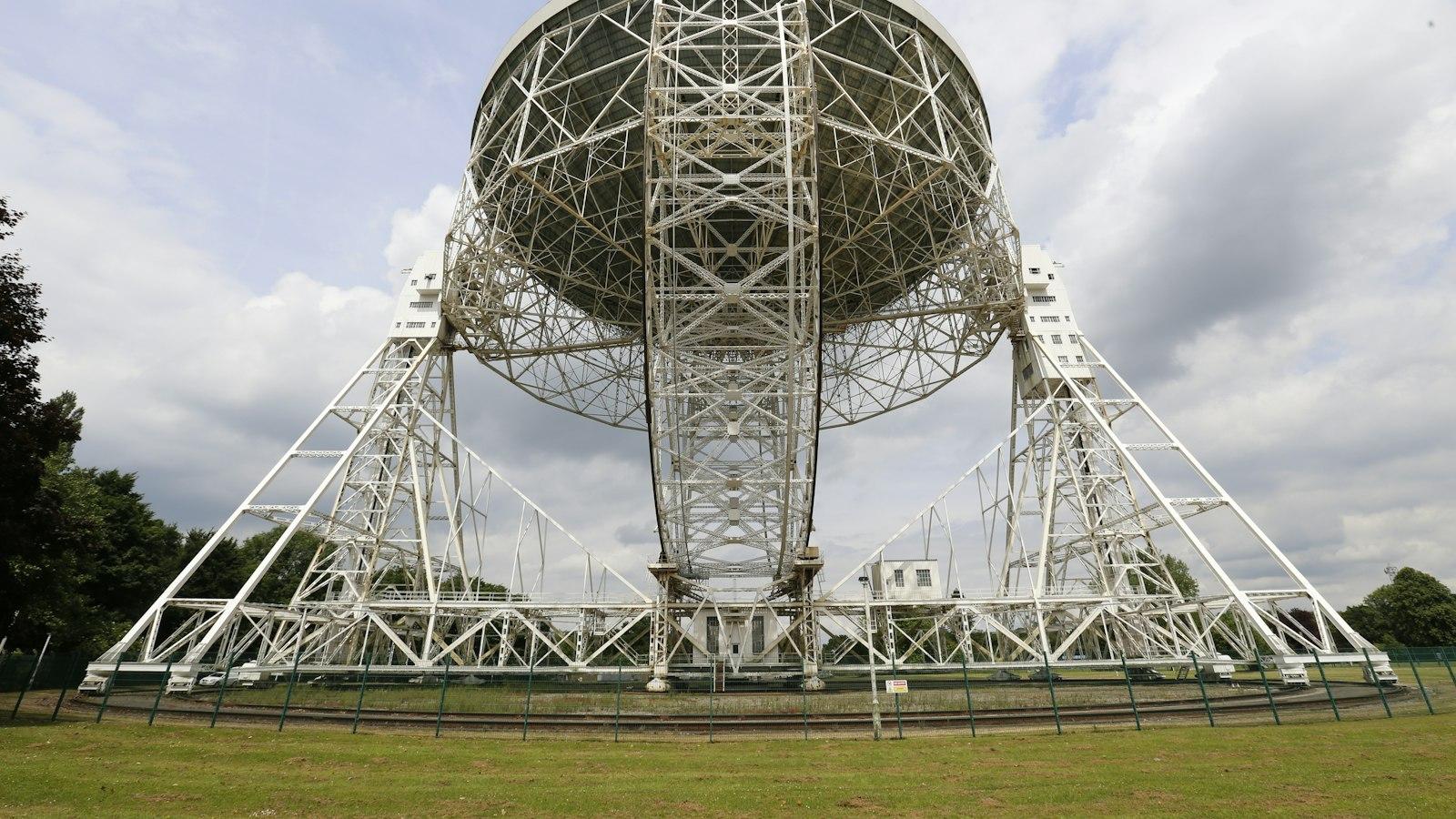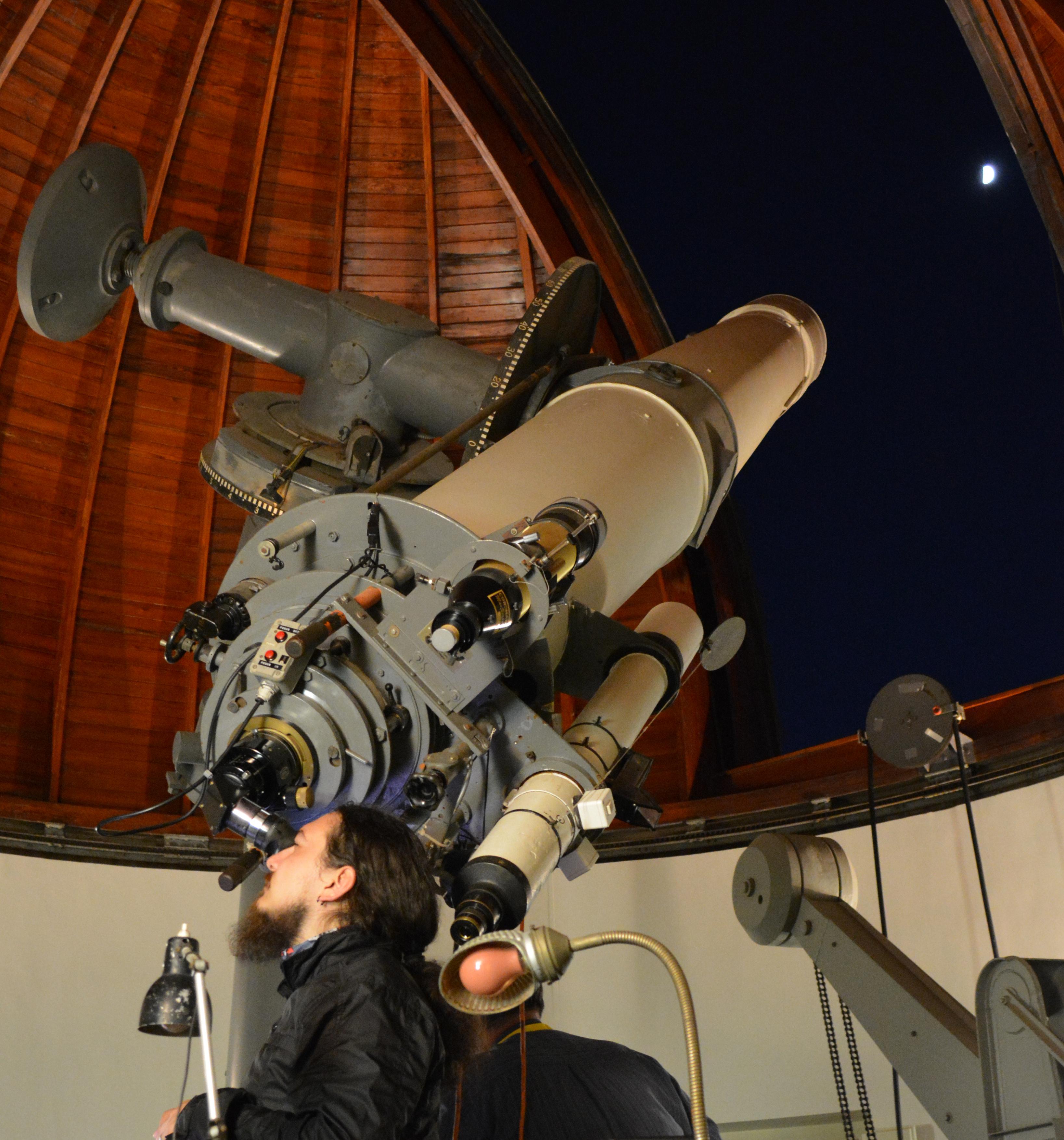
Have you ever wondered how to unlock the wonders of the universe that lie beyond our naked eye? A telescope is the key to unveiling the celestial secrets, enabling us to explore distant galaxies, witness awe-inspiring cosmic events, and delve into the intricacies of our own solar system. Whether you are a beginner or have dabbled in stargazing before, understanding how to use a telescope is essential to fully immerse yourself in the captivating world of astronomy. In this article, we will guide you through the fundamental steps of using a telescope, from setting it up properly to observing distant celestial objects. So, grab your telescope and get ready for an enchanting journey through the night sky!
Choosing the Right Telescope for Your Needs
When it comes to , there are a few important factors to consider. Whether you are an amateur astronomer or just starting out, finding the right telescope can greatly enhance your stargazing experience.
First and foremost, it is crucial to determine your observing goals. Are you interested in viewing the moon and planets? Or are you more fascinated by deep-sky objects like galaxies and nebulae? Knowing what you want to observe will help you select a telescope with the appropriate magnification and light-gathering capabilities.
Next, consider the type of telescope that suits your needs. There are three main types: refractors, reflectors, and compound telescopes. Refractor telescopes use lenses to gather and focus light, while reflector telescopes use mirrors. Compound telescopes, on the other hand, combine both lenses and mirrors to create their images. Each type has its advantages and disadvantages, so it is important to do some research before making a decision.
Another important factor to consider is the telescope’s aperture, which refers to the diameter of its main lens or mirror. A larger aperture allows more light to enter the telescope, resulting in brighter and more detailed images. However, larger apertures also mean bulkier and more expensive telescopes, so it is essential to strike a balance between performance and budget.
Lastly, don’t forget about portability and ease of use. If you plan to take your telescope on the go or travel frequently to dark-sky locations, a compact and lightweight option would be ideal. Additionally, consider features such as the mount and tripod stability, as these play a significant role in achieving steady and smooth tracking of celestial objects.

Understanding the Different Types of Telescopes
Telescopes can open up a whole new world of exploration and discovery. Whether you’re a novice or an experienced astronomer, it’s important to understand the different types of telescopes available and their respective features. Each type offers unique capabilities and advantages depending on your individual needs and interests. Let’s delve into the fascinating world of telescopes!
1. Refractor Telescopes
Reflector telescopes work by utilizing a set of lenses to bend and focus incoming light, providing crisp and clear images. They are perfect for observing bright celestial objects such as the moon and planets. However, they tend to be more expensive due to the high-quality lenses required. Keep in mind that refractor telescopes typically have a limited field of view.
2. Reflector Telescopes
Reflector telescopes employ a curved mirror to gather light and produce an image. They excel at capturing faint celestial objects such as distant galaxies and nebulae. Reflectors are generally more affordable compared to refractor telescopes, offering larger lenses at a lower cost. However, reflectors require regular maintenance to keep the mirrors clean and properly aligned.
3. Compound Telescopes (Catadioptric)
Compound telescopes, also known as catadioptric telescopes, combine the advantages of both refractor and reflector telescopes. They use a combination of lenses and mirrors to provide compact designs and versatile functionality. Compound telescopes are highly popular among astrophotographers due to their ability to capture celestial objects with high precision.
4. Mounts and Tripods
A solid mount and tripod are crucial for a stable viewing experience. There are two main types of mounts: altitude-azimuth (Alt-Az) and equatorial. Alt-Az mounts allow simple up and down, left and right movements, while equatorial mounts align with the Earth’s rotation for easier tracking of celestial objects. Ensure that your telescope comes with a sturdy tripod to minimize vibrations and maximize clarity.
5. Accessories and Considerations
Many telescopes come with various accessories to enhance your observing experience. These can include eyepieces of different focal lengths for different magnifications, finderscopes to help locate objects, and filters to enhance specific features of celestial bodies. Additionally, consider factors such as portability, ease of setup, and the level of maintenance required when selecting a telescope that suits your needs.

Setting Up and Aligning Your Telescope Properly
Before you start exploring the wonders of the night sky with your telescope, it’s important to set it up and align it properly. Here are some steps to help you get started:
1. Find a Suitable Location
Choose a location away from streetlights and other sources of artificial light that could interfere with your viewing experience. A clear and open area with minimal obstructions is ideal. Additionally, make sure the ground is level and stable to ensure steady viewing.
2. Assemble the Telescope
Follow the manufacturer’s instructions to assemble your telescope. Start by attaching the tripod legs securely, making sure they are fully extended and locked in place. Then, attach the optical tube assembly to the tripod head, ensuring it is firmly attached.
3. Align the Finder Scope
Aligning the finder scope with your telescope is crucial for locating celestial objects accurately. Choose a distant object, such as a tree or building, and center it in the main telescope’s eyepiece. Use the adjustment screws on the finder scope to align its crosshairs with the object.
4. Balance the Telescope
Properly balancing your telescope will ensure smooth movements and prevent strain on the mount. Adjust the counterweights, if applicable, until the telescope stays in position when you let go of it at any angle. A balanced telescope will also minimize vibrations and improve image stability.
5. Polar Alignment
If you have an equatorial mount, polar alignment is essential for accurate tracking of celestial objects. Align the mount’s axis with the North Star (Polaris) using a polar alignment scope or smartphone apps designed for this purpose. Adjust the mount until it accurately tracks the movement of the stars.
Following these steps will set you up for success in using your telescope. Remember to always consult your telescope’s instruction manual for specific setup instructions, as each model may have unique requirements. Enjoy the awe-inspiring views of the cosmos that await you!

Mastering Telescope Features and Adjustments
Telescopes are fascinating devices that allow us to explore the vast wonders of the universe. They help us observe celestial bodies with great clarity and detail, bringing the beauty of the night sky closer to us. To truly appreciate the wonders of astronomy, it is important to understand and master the various features and adjustments of a telescope. In this post, we will explore some key aspects of using a telescope effectively.
1. Types of Telescopes
Telescopes come in various designs, each with its own strengths and weaknesses. It’s important to choose the right type of telescope based on your interests and observing conditions. The two main types are:
- Refractor Telescopes: They use lenses to gather and focus light, providing sharp and high-contrast images. Ideal for planetary observations and lunar details.
- Reflector Telescopes: They use mirrors to collect and focus light, offering a larger aperture and greater light-gathering capability. Excellent for deep-sky observations and astrophotography.
2. Adjusting the Focus
Properly focusing your telescope is crucial to ensure clear and sharp views. Most telescopes have a focusing mechanism that allows you to adjust the position of the eyepiece or the telescope’s primary mirror. Follow these steps to achieve optimal focus:
- Identify your target and center it in the field of view.
- Slowly adjust the focus knob or rack until the image starts appearing sharp.
- Tweak the focus further while observing until the image reaches maximum clarity.
3. Tracking Celestial Objects
The Earth’s rotation causes celestial objects to appear to move across the sky. To keep your target in view, most telescopes have mechanisms for tracking these objects. There are two main tracking methods:
- Manual Tracking: By manually adjusting the telescope’s controls, you can track objects as they move across the sky. It requires constant monitoring and slight adjustments.
- Motorized Tracking: Advanced telescopes often have motorized mounts that automatically track celestial objects. This convenient feature allows for extended observing sessions without constant adjustments.
4. Using Filters and Eyepieces
Filters and eyepieces can enhance the observing experience by providing different views of astronomical objects. Filters selectively block specific wavelengths of light, revealing details and enhancing contrast. Eyepieces, on the other hand, control magnification and the field of view. Experimenting with different combinations of filters and eyepieces can lead to exciting and unique observations.
5. Maintenance and Storage
A well-maintained telescope can provide years of stargazing enjoyment. Remember to clean the optics carefully and cover the telescope when not in use to protect it from dust and moisture. Properly storing your telescope in a dry and stable environment, preferably in a padded case, will help safeguard its delicate components. Regular checks and maintenance will ensure its optimal performance whenever you wish to explore the wonders of the night sky.

Exploring the Night Sky with Your Telescope
The Night Sky: A Realm Full of Wonder
Have you ever gazed up at the night sky and wondered about the mysteries hidden within the vastness above? With a telescope, you can unlock a whole new level of exploration and truly immerse yourself in the wonders of the universe. Whether you’re an amateur astronomer or just curious about the celestial bodies, here’s a guide on how to make the most of your telescope and embark on an exciting journey through the night sky.
Choosing the Right Telescope
Before diving into stargazing adventures, it’s essential to select the right telescope for your needs. Here are some key factors to consider:
- Aperture: Opt for a telescope with a larger aperture as it determines its light-gathering capacity and image clarity.
- Type of telescope: Decide between the three main types – refractor, reflector, and compound telescopes – based on your preferences and budget.
- Mount: A sturdy mount is crucial to keep your telescope stable and allow smooth tracking of celestial objects.
Setting Up Your Telescope
Setting up your telescope correctly is essential for optimal performance. Here’s a step-by-step guide:
- Choose a suitable location: Find an open space with minimal light pollution and a clear view of the sky.
- Assembly: Follow the manufacturer’s instructions to assemble the different components of your telescope.
- Collimation: Align the optical components of reflector telescopes to ensure sharp and precise images.
- Balancing: Balance your telescope to remove any unnecessary strain on the mount and improve stability during observations.
Exploring the Night Sky
With your telescope all set up, it’s time to dive into the wonders of the night sky. Here are some celestial objects you can explore:
| Solar System | Deep Sky Objects | Notable Constellations |
|---|---|---|
| Jupiter | Orion Nebula | Ursa Major (Great Bear) |
| Saturn | Andromeda Galaxy | Leo |
| Mars | Sombrero Galaxy | Scorpius |
Keep in mind that the night sky changes throughout the year, so don’t forget to consult star charts or smartphone apps to locate fascinating objects.
Maintaining and Storing Your Telescope
To keep your telescope in optimal condition and extend its lifespan, follow these maintenance tips:
- Cleaning: Regularly clean your telescope’s lenses and mirrors using appropriate tools and techniques.
- Storage: Store your telescope in a cool, dry place to prevent damage from humidity and temperature fluctuations.
- Transportation: Use protective cases or covers to safeguard your telescope when transporting it to different stargazing locations.
By caring for your telescope, you’ll ensure many more nights of awe-inspiring exploration of the night sky.
Q&A
Q: What is a telescope and what is its purpose?
A: A telescope is an optical device designed to enhance our ability to observe distant objects, particularly those in the night sky. Its purpose is to collect and focus light, allowing us to see celestial bodies more clearly and in greater detail.
Q: How does a telescope work?
A: Telescopes work by utilizing a combination of lenses or mirrors to gather and magnify light. The primary lens or mirror, known as the objective, gathers light from the source and focuses it to form an image. This image is then magnified using additional lenses or mirrors, known as eyepieces, allowing us to observe the object with clarity.
Q: What are the different types of telescopes available?
A: There are three main types of telescopes: refracting telescopes, reflecting telescopes, and compound telescopes. Refracting telescopes use lenses to bend light, while reflecting telescopes use mirrors to redirect light. Compound telescopes combine both lenses and mirrors for enhanced performance and versatility.
Q: What factors should be considered when purchasing a telescope?
A: When buying a telescope, several factors should be taken into consideration. These include the type of telescope, its aperture (diameter of the objective lens or mirror), focal length, optical quality, portability, budget, and intended use, such as astrophotography or planetary observation.
Q: How do I set up and align my telescope?
A: The setup and alignment process for telescopes may vary slightly depending on the model. However, it typically involves assembling the various components, attaching the eyepiece, aligning the finderscope, and ensuring that the telescope is properly leveled. Detailed instructions can be found in the telescope’s user manual.
Q: What is the best location for telescope observation?
A: The ideal location for telescope observation is away from bright city lights and areas with excessive light pollution. Finding a dark and secluded spot, such as a rural area or a nearby park, will enhance your viewing experience and allow you to observe objects more clearly.
Q: How can I maintain and care for my telescope?
A: To ensure optimal performance and longevity of your telescope, proper maintenance is essential. Some basic care includes regularly cleaning lenses or mirrors using appropriate procedures, storing the telescope in a safe and dry place when not in use, and avoiding exposing it to extreme weather conditions and physical damage.
Q: Can a beginner effectively use a telescope without any prior knowledge or experience?
A: Absolutely! While using a telescope may seem intimidating at first, beginners can enjoy stargazing with some basic knowledge and practice. Understanding the telescope’s manual, learning to navigate the night sky, and seeking helpful resources or joining astronomy clubs can greatly enhance the experience and help beginners make the most of their telescope. In conclusion, understanding how to use a telescope can open up a world of wonder and exploration for both amateur stargazers and seasoned astronomers. By following a few simple steps, you can enhance your celestial viewing experience and unlock the mysteries of the night sky. Remember to choose the right telescope for your needs, familiarize yourself with its components, and learn the ins and outs of using a telescope mount. It’s important to set realistic expectations and be patient, as finding celestial objects can require time and practice. Whether you’re admiring the craters of the Moon, marveling at distant galaxies, or tracking the movements of planets, a telescope offers endless opportunities for discovery and awe-inspiring observations. By taking the time to learn how to use a telescope effectively, you’ll be well-equipped to embark on a lifelong journey through the mesmerizing realms of our universe. Happy stargazing!






